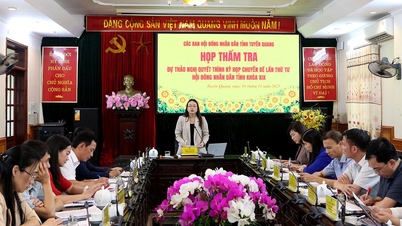Disbursement is still high in some places, stagnant in others
Data from the Ministry of Finance shows that the total public investment plan for the State budget in 2025 assigned by the Prime Minister is VND 899,180.2 billion. If the local budget balance plan is included, the total plan assigned in 2025 is VND 1,060,631.4 billion. Up to this point, the total detailed capital allocation is VND 871,041.6 billion, reaching 96.9% of the capital plan assigned by the Prime Minister.

The remaining capital that has not been allocated in detail is VND 28,138.6 billion, accounting for 3.1% of the plan assigned by the Prime Minister . The actual disbursement from the beginning of the year to October 23 was VND 464,828 billion, reaching 51.7% of the plan assigned by the Prime Minister. Thus, compared to the target of disbursing public investment capital in 2025 of at least 95%, in the remaining 3 months, including the last 2 months of 2025 and the first month of 2026 (calculated according to the fiscal year), the pressure to disburse public investment capital will still be very heavy, and ministries, branches and localities will have to take drastic measures to effectively implement the proposed solutions so that capital flows not only into projects but also into people's lives.
Pointing out the difficulties affecting the disbursement progress, the Ministry of Finance said that there are 3 main groups of policies and mechanisms and implementation organization. Notably, regarding the arrangement and reorganization of administrative units at all levels and the transition to a 2-level local government organization model: Some localities after the merger have not yet completed their apparatus and personnel in a timely manner, and do not have a specialized Project Management Board; some newly formed or merged communes do not have a person in charge of public investment, and officials have to take on many new tasks. Some works and projects have not yet been transferred to the investor, and the handover documents are slow; the merger of provinces leads to the same locality having many land price lists, affecting the development of compensation and site clearance plans...
Regarding the implementation, compensation and site clearance are still the biggest obstacles, which have existed for a long time, causing delays in the project chain, affecting the construction progress and capital disbursement. In addition, many ODA projects face difficulties in negotiation, signing and international payment procedures; the loan agreement approval time lasts 12-18 months due to compliance with the lender's regulations; some projects have to be suspended due to objective factors such as changes in sponsors. Some project management boards, investors and contractors are not proactive and resolute in organizing construction; limited capacity, not enough human resources, machinery and means have been arranged; progress and budget planning are not close to reality; coordination between agencies and units is still lacking; There are also signs of apprehension, fear of making mistakes, avoidance, and shirking of responsibility... In addition, adverse and complicated weather conditions have directly impacted the construction progress of projects, especially key transport projects.
Get to the bottom of it
It is worth mentioning that, despite the context of the transfer of the 2-level local government model and the impact of particularly unusual weather conditions in recent months in the North Central and Northern mountainous regions, some localities have had very high disbursement rates as of early October 2025. Specifically, Thanh Hoa province reached 92%, Ninh Binh reached 91%, Lao Cai reached 81%, Thai Nguyen reached 74%...
However, in addition, there are 29 ministries, central agencies and 16 localities with disbursement rates below the national average. This reality shows that, with the same mechanism and weather conditions, places with close direction, regular monitoring and flexible capital coordination have better disbursement progress, while places with delays still face "bottlenecks" in procedures and investor capacity.
For example, in Thanh Hoa and Lao Cai, two localities with high disbursement rates, the localities said that they have resolutely implemented strong solutions such as: perfecting the Steering Committee, urging investors, flexibly transferring capital from slow projects to fast projects, clearing land, supervising contractors and assigning specific responsibilities to each individual, creating continuous pressure for implementation...
According to the Ministry of Finance, to strive for the goal of disbursing 100% of the public investment capital plan in 2025, aiming for economic growth of 8.3-8.5%, along with the directions and management of the Government, it is necessary to have the joint efforts and drastic actions of ministries, central agencies and localities to complete the common goal in the coming time: Timely, drastic and effective implementation of goals, tasks and solutions to promote disbursement of public investment capital according to the direction of the Government and the Prime Minister; Further promote the role of heads of ministries, agencies, heads of Party committees and local authorities in leadership, direction and implementation; Urgently overcome the identified shortcomings and limitations, refer to good lessons and valuable experiences of ministries and central agencies with high disbursement rates.
It is known that the Ministry of Finance is currently reporting the implementation of public investment disbursement on a weekly basis to the Prime Minister and the Central Inspection Committee. Therefore, ministries, branches and localities need to regularly review and evaluate the disbursement situation for each project; develop weekly implementation plans; promptly transfer internal capital from slow-disbursing projects to good-disbursing projects; prepare payment records immediately for completed and accepted volumes to avoid accumulation at the end of the month...
From the local side, government leaders are also taking action. For example, in Quang Ninh, by the end of October, the total disbursement value of public investment capital in the entire Quang Ninh province reached 6,394 billion VND, equivalent to 54% of the plan assigned by the Government at the beginning of the year and 38.2% compared to the adjusted plan. To promote disbursement, with a target of about 2,000 billion VND per month in the last quarter of the year, the People's Committee of Quang Ninh province has asked investors to take advantage of favorable weather conditions in the dry season, mobilize human resources and machinery, and urge contractors to speed up construction progress. Leaders of units are assigned specific tasks to monitor and remove difficulties for each project. The disbursement results will be an important basis for assessing the level of completion of tasks in 2025 of each collective and individual.
Similarly, in Hanoi, the pressure to disburse in the last two months of the year is very high because the city needs to complete more than 43,000 billion VND to reach 100% of the central capital plan and more than 62,700 billion VND to complete the capital plan allocated by the city. Therefore, the city has launched a 75-day peak emulation period, from the beginning of November 2025 to mid-January 2026, mobilizing the entire political system to "join in synchronously and act decisively", striving to complete 100% of the public investment disbursement plan in 2025...
Source: https://baolaocai.vn/chay-nuoc-rut-giai-ngan-dau-tu-cong-post886422.html
























































































![Dong Nai OCOP transition: [Article 3] Linking tourism with OCOP product consumption](https://vphoto.vietnam.vn/thumb/402x226/vietnam/resource/IMAGE/2025/11/10/1762739199309_1324-2740-7_n-162543_981.jpeg)













Comment (0)